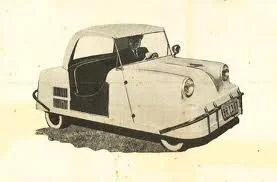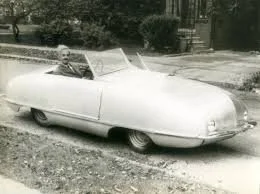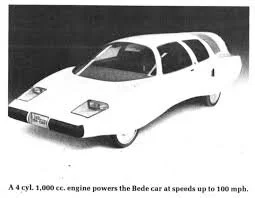The 1947 Gadabout was created by Ray Russell, a Detroit engineer who possessed an active mind and an artist’s soul. Its body was sleek and sculpted, and made of aluminum using just 4 different panels. Those were stretched over an MG chassis that retained its 80in wheelbase, but it was widened to allow for 3-across seating. (Gadabouting, v. Three people driving around while squished together)
While the space between the Gadabout’s wheels is very short, that was made up for with very long overhangs. This allowed Gadabout owners to specify whether they wanted their engine to be mounted in front of the front wheels or behind the back ones - though why anyone would want that choice is a mystery to all but Ray Russell.
At any rate, such flexibility was made possible by the fact that the car had no axles or transmission. All four wheels were suspended independently, aircraft-style, each with a coil spring and torsion bar. The two drive wheels, whether they be in front or in back, had a small motor in each hub driven by oil pressure from the engines’ crankshaft. And that engine was also no technological slouch either. The air-cooled, two-stroke unit had direct fuel injection and a turbocharger - a first on an American car.
It was claimed the Gadabout could do 50mph and get 50mpg. No wonder Popular Science, Mechanix Illustrated and Hemmings magazines all called this technological tour de force some variation of “the car of tomorrow, today.” Unfortunately, the little runabout never made it out of yesterday. Only one was ever made.











